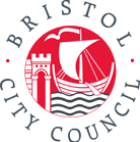“I pushed all I could - out came a baby who was pale, limp and did not cry”
Professor Marianne Thoresen describes her groundbreaking work to prevent brain injuries in new-born babies who have been starved of oxygen by cooling them.
- 26th June 2018
Professor Marianne Thoresen describes her groundbreaking work to prevent brain injuries in new-born babies who have been starved of oxygen by cooling them. Marianne is Professor of Neonatal Neuroscience and Honorary Consultant Neonatologist at the University of Bristol and University Hospitals Bristol NHS Foundation Trust. This blog is part of the Bristol Firsts series, celebrating Bristol-based innovations in the NHS’s 70th year. If you have an idea for a Bristol Firsts blog, get in touch with Zoe Trinder-Widdess on [email protected].
“I pushed all I could – out came a baby who was pale, limp and did not cry. The midwife and doctor rushed her away and started heart compressions and put a mask over her face. She had suffered lack of oxygen before or during delivery, they said, and had no heart rate at birth.”
How could this happen? Mum had done all the right things, she had had a perfect pregnancy.
However, it happens, sometimes without warning – though there can be problems hours or days before delivery, related to blood flow to the brain (also known as birth asphyxia).
What happens to the brain after lack of oxygen? Brain cells may die or are injured – and because of this, the baby may die, or survive with disabilities like cerebral palsy and learning difficulties.
I learned about this when working as a physiotherapist treating children with cerebral palsy (CP). The most severely affected children were in wheelchairs and needed special schooling. After medical school, I worked on research in Norway to develop treatment that could reduce brain injury after birth asphyxia. I had shown that cooling new-born rats and pigs after lack of oxygen reduced injury and sometimes resolved it. Rumours about this reached Bristol and I was offered a post as an academic consultant at the University and St Michael’s Hospital in January 1998, 20 years ago.
By May 1998, I had ethical permission to cool asphyxiated babies who were very poorly at birth, if the parents consented to take part. It was fantastic to come to Bristol and I was supported as a new consultant; however, some were also suspicious – babies should be kept warm and I wanted to cool them to 33.5C for three days. I am grateful to those parents who trusted me to apply experimental treatment to the most precious person in their life, their new-born child. The three-day protocol, which is still the one used worldwide today, was first trialled in Bristol on nine patients and published in the Journal of Pediatrics in 2000 (Thoresen M).
Things moved quickly from there – we were a key treatment centre in two large randomised trials of three days cooling versus standard-of-care. In 2010, NICE and the International Resuscitation Guidelines, ILCOR, recommended three days of cooling as standard-of-care after perinatal asphyxia.
What happened to these children before this? Out of 100 patients, 33 would die, 33 would survive with disability including CP and 34 would be normal or very mildly affected.
We centralised the cooling treatment; patients from eight regional hospitals are now cooled during transport to Bristol. Since 1998, we have cooled 450 newborns at St Michael’s hospital – and since 2007 when the trials had finished, cooling became standard-of-care for asphyxiated newborns in Bristol. Their outcome is ‘good’ compared to previously, with 10% mortality; 24% have some degree of disability, including CP and 66% are normal or very mildly delayed. This means many lives are saved, with improved quality-of-life in survivors.
We learn a lot from following-up the patients, which allows us to offer even better care. We have seen that fewer infants develop CP and for those who do, the severity is much less. Parents are supportive of the therapy, they bring their child to clinic and we can document their development and advise on care. We have also taught others how to run a cooling programme; 500 nurses and doctors from the UK and beyond attended our Bristol Cooling Course, which ran from 2007-2014.
The innovative treatment was recognised by the University of Bristol when I received the Vice Chancellor’s Innovation Prize in 2011, and more importantly the award of the Queen’s Anniversary Prize to University of Bristol in 2014: this prize for Higher Education and Research was awarded for my work along with that of Peter Fleming and Pete Blair for cot death prevention and Tim Draycott for improvements in obstetric management.
Although there have been major improvements in obstetric and neonatal care, perinatal asphyxia is still a severe condition with 34% poor outcome including 10% mortality. We have just finished a small trial of comparing ‘standard cooling’ with ‘cooling+breathing the inert gas xenon’. We will know the results from this study in October 2019; there is always room for improvement.






